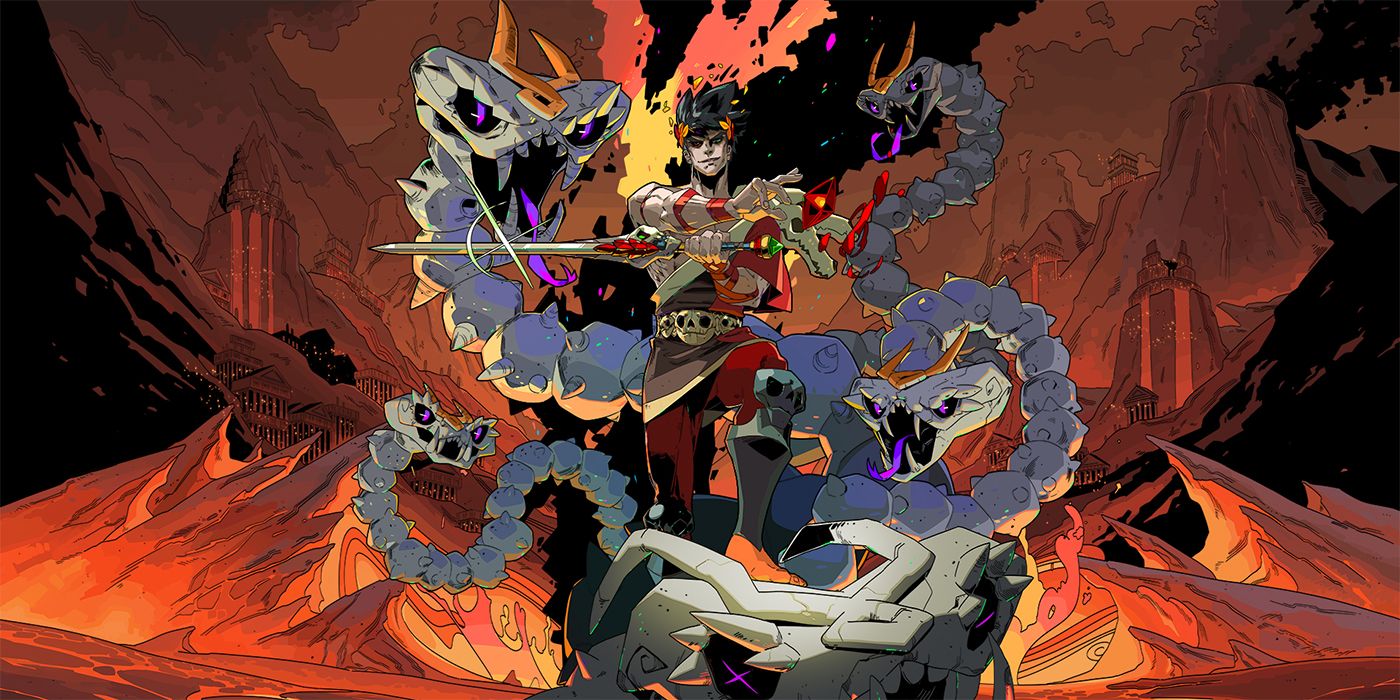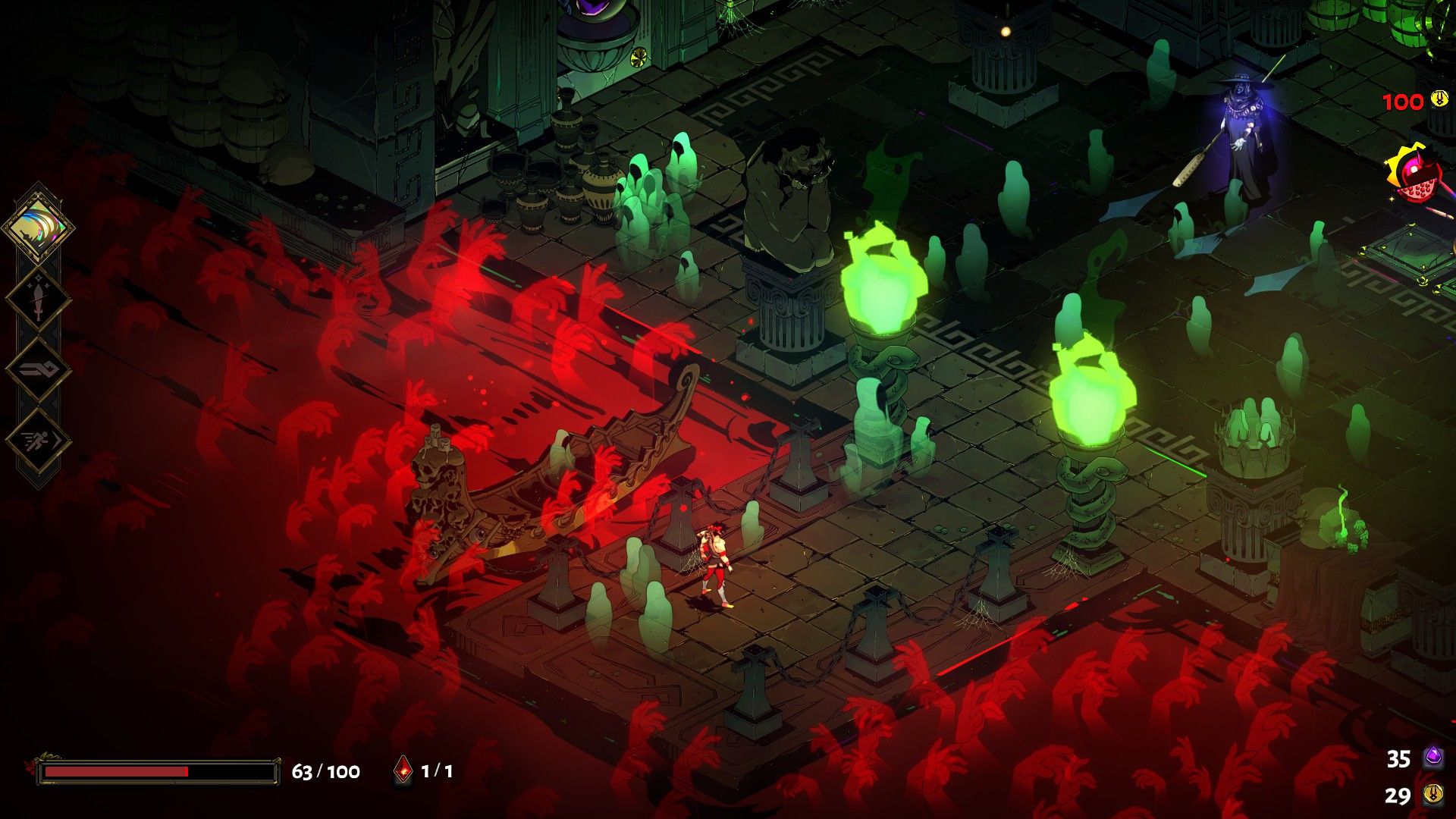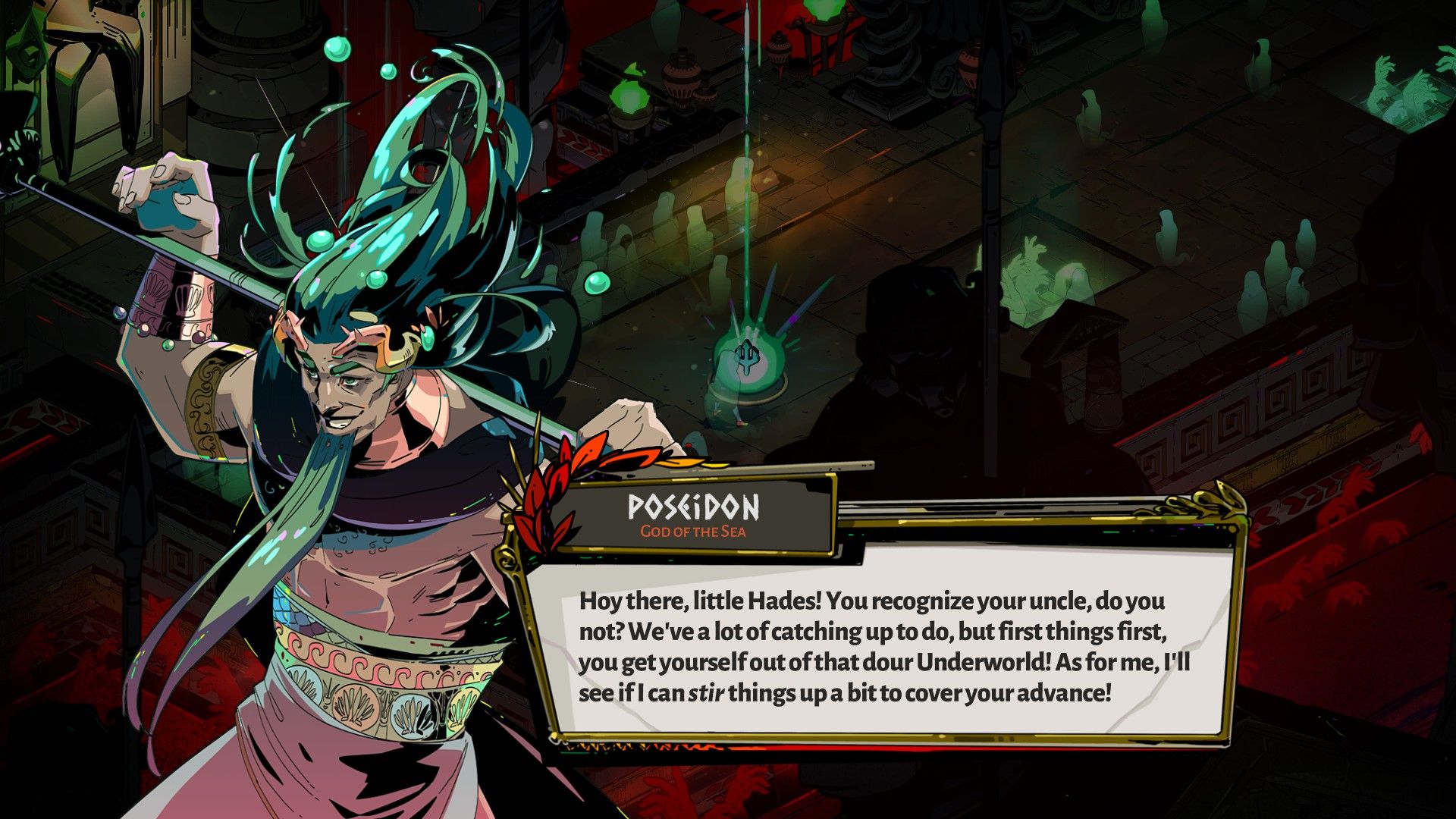Supergiant Games is a self-described "small developer with big ambitions," which makes its success with Bastion, Transistor, and Pyre all the more impressive. However, its latest may just be its best game yet, with Hades following in these big footsteps but dialing everything up to 11.
In short, Hades is Supergiant Games' magnum opus. It takes everything the developer is good at and packs it into an unassuming roguelike dungeon crawler. The premise of the game is rather simple: players take on the role of Prince Zagreus (the son of Hades) as he tries to escape the underworld. This takes the player on a journey through Tartarus, Asphodel, Elysium, and more, with just the aid of the Olympian gods and the game's core mechanics.
Every time a player dies, they are transported back to the House of Hades, where Zagreus can interact with iconic characters from Greek mythology like Nyx and Achilles. This sets up a gameplay loop that is undeniably addictive. Players can explore this house, give gifts to characters for rewards, and ultimately advance the overarching story. Once players are ready, they can begin a new run, go as far as they can, and usually die, at which point they return to the house.
Each run of Hades, though, is a breath of fresh air. Just when players think they've seen everything Hades has to offer, it brings up something new. As a roguelike with hack and slash elements, players can expect a randomly generated order of rooms with randomly generated enemies to boot. This means that players will never know what's next and what type of enemies they'll face, and it keeps the game feeling genuinely alive. Players are constantly having to learn enemy types, preparing as much as possible for the unexpected, and adapting to the game's combat on the fly—which is typically more thought than required for a hack and slash game.
There are a variety of Infernal Arms (Hades' weapons) to choose from, ranging from the Stygian Blade to the Adamant Rail and the Heart-Seeking Bow to the Shield of Chaos. Players are quickly able to figure out what best works with their playstyle, which is supplemented by the straightforward combat layout of Hades. There's the basic dashes, specials, charge attacks, casts, calls, and temporary abilities, but what's nice is these will change from run to run.
Journeying through the Underworld rewards players with the basics like money and darkness (which powers up character stats like damage output and gives the player revives), but it also allows them to tweak all of the combat options. This includes (but is not limited to) the ability to dash and push enemies away, to infuse damage with abilities like doom and weak, to change their basic cast into a lightning chain, to utilize godlike abilities from Posideon (as well as others), and far more.
However, with the exception of things like Darkness accumulated, all of this disappears as players die and return to the House of Hades. As they begin yet another run, players have to hodgepodge together new builds and abilities to try and push through the game's various chambers. Yet while there's always a variety of basic enemies, Hades players have to be prepared to face new bosses and mini-bosses. Although there are certain key enemies that repeat, there are surprising moments where a brand new boss replaces the old. The unpredictable level and enemy design coupled with randomly generated abilities is practically a match made in heaven.
It's simple, straightforward, and rewarding, making the core gameplay loop incredibly addictive. The only real drawback that comes to mind with the loop is how the enemies and order of the rooms are randomly generated, but not the rooms themselves. Learning the environment is a key tactic, as traps can be good or bad for the player, but some room layouts are so obvious that players can go in and know how to approach combat. It's a small problem - a scuff at most - but seeing the same room multiple times with new enemies is still seeing the same room multiple times.
Nonetheless, this addiction is fed with a solid use of "downtime" in the House of Hades where players can give gifts to unlock new items to use in their runs or simply talk to characters and push the story forward. Each little reveal is a brand new reason to start a run, and interacting with the characters there and the Olympian Gods in the dungeon really make the narrative stand out. The overall art design of the game also pops in these moments, as there's plenty to take in and admire, regardless of where the player is.
The overall design of the characters is interesting too. Hades adds a nice layer of distinction to the more gothic-toned chthonic gods like Nyx and the more heroic nature of the Olympian gods, making them stand out from each other while simultaneously accentuating the game's art design. In short, regardless of whether it's looking at the layout of the dungeon, the mountains of Asphodel, or the character designs of Poseidon or Dionysus (for example), it's a beauty to take in.
Hades is everything a dungeon-crawler fan could want out of a game. Its gameplay loop is rewarding and interesting, it's simple enough that there's no skill barrier, it's complex enough that the repetition is a benefit and not a detriment, and all the small details boost the bigger ones. Hades is ultimately the result of when every aspect of a game comes together to form one fun and cohesive experience, and it's a testament to what Supergiant Games can do.
Hades is available now for PC and Switch. Game Rant was provided a Steam code for the purposes of this review.



